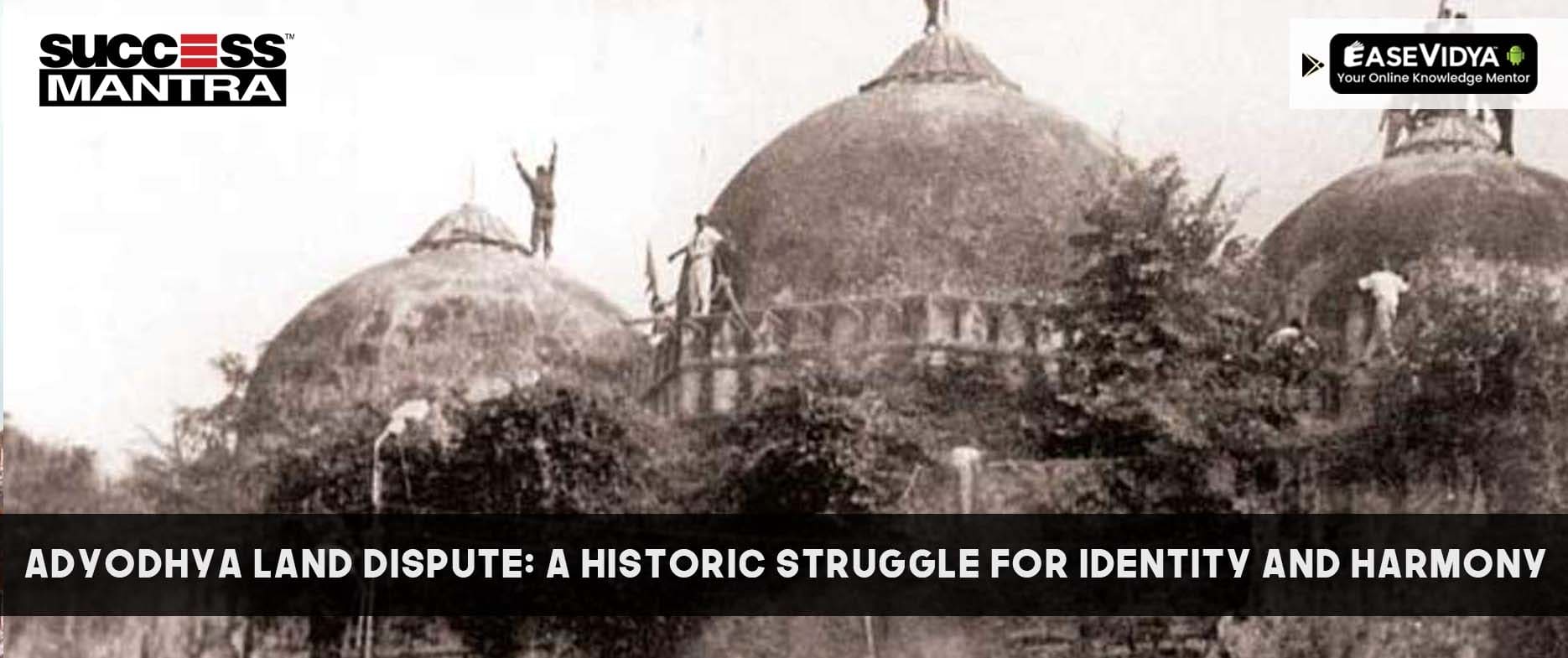
Ayodhya Land Dispute: A Historic Struggle for Identity and Harmony
Ayodhya Land Dispute: A Historic Struggle for Identity and Harmony
Introduction:
The Ayodhya land dispute, centered around the holy city of Ayodhya in Uttar Pradesh, India, has been a longstanding and contentious issue that has shaped the socio-political landscape of the country. The dispute revolves around a piece of land that holds great religious significance for both Hindus and Muslims, with each community claiming ownership and the right to build a religious structure on the site. This article explores the historical background, legal developments, and the socio-cultural implications of the Ayodhya land dispute.
Historical Context:
The roots of the Ayodhya dispute trace back to the 16th century when the Mughal emperor Babur built the Babri Masjid at the disputed site. According to Hindu beliefs, this location is considered to be the birthplace of Lord Ram, a revered figure in Hinduism. Over the centuries, tensions simmered as various groups contested the ownership of the land.
The Demolition of Babri Masjid:
The dispute gained international attention on December 6, 1992, when a mob of Hindu activists demolished the Babri Masjid, leading to widespread communal violence across India. The demolition exacerbated religious tensions and raised questions about the secular fabric of the nation.
Legal Battles and Court Proceedings:
Post the demolition, a series of legal battles ensued, seeking a resolution to the Ayodhya land dispute. The case reached its climax in November 2019 when the Supreme Court of India delivered a landmark judgment. The court granted the disputed land to Hindus for the construction of a Ram Temple, while also directing the government to provide an alternative plot of land to the Muslims for the construction of a mosque.
Key Case Laws:
- M Siddiq v. Mahant Das: The Allahabad High Court's judgment, dividing the Ayodhya land title between the Sunni Waqf Board, Nirmohi Akhara, and Ram Lalla, was a crucial legal milestone in the dispute.
- Supreme Court's Ayodhya Verdict: The 2019 Supreme Court verdict was based on extensive legal scrutiny, recognizing the historical and religious sentiments of both communities. The unanimous decision emphasized the need for communal harmony.
Legal Implications:
The Ayodhya case not only resolved a longstanding dispute but set a precedent for handling complex religious and historical conflicts in India. The emphasis on a fair distribution of the land to accommodate both Hindu and Muslim interests demonstrates the judiciary's commitment to justice and inclusivity.
Socio-Cultural Implications:
The Ayodhya land dispute has had far-reaching socio-cultural implications. It has highlighted the challenges of balancing religious sentiments with the principles of secularism. The dispute has been a source of communal tensions, leading to tragic incidents of violence and polarization. On the other hand, the Supreme Court's verdict was hailed by many as an attempt to find a middle ground and promote religious harmony.
The Way Forward:
In the aftermath of the Supreme Court's decision, there have been calls for unity and reconciliation. The construction of the Ram Temple is finally complete, and efforts made were to ensure that the process is inclusive and respectful of the diverse religious fabric of India. The Ayodhya dispute serves as a reminder of the importance of dialogue, tolerance, and understanding in addressing sensitive religious issues.
Conclusion:
The Ayodhya land dispute has been a complex and deeply emotional issue that has shaped the course of India's history. Finally the inauguration of the Ram Mindir will take place on 22nd January 2024. In conclusion, the establishment of the Ram Mandir in Ayodhya marks the culmination of a centuries-old struggle, blending faith, history, and architectural brilliance. This historic moment resonates not only as a symbol of religious harmony but also as a testament to the resilience and unity of the Indian people.












gqhohccgc
Ayodhya Land Dispute: A Historic Struggle for Identity and Harmony <a href="http://www.gn4xmje259o060t2y0193g43z22wrdpws.org/">agqhohccgc</a> [url=http://www.gn4xmje259o060t2y0193g43z22wrdpws.org/]ugqhohccgc[/url] gqhohccgc http://www.gn4xmje259o060t2y0193g43z22wrdpws.org/
svkmxlbvhr
Ayodhya Land Dispute: A Historic Struggle for Identity and Harmony [url=http://www.gn6fyy5fkec66731b9w4q6x57b6y70v7s.org/]usvkmxlbvhr[/url] svkmxlbvhr http://www.gn6fyy5fkec66731b9w4q6x57b6y70v7s.org/ <a href="http://www.gn6fyy5fkec66731b9w4q6x57b6y70v7s.org/">asvkmxlbvhr</a>
pbpqcfciex
Ayodhya Land Dispute: A Historic Struggle for Identity and Harmony pbpqcfciex http://www.gr2g1s2ud8us31f087zn50072ov8a9ffs.org/ <a href="http://www.gr2g1s2ud8us31f087zn50072ov8a9ffs.org/">apbpqcfciex</a> [url=http://www.gr2g1s2ud8us31f087zn50072ov8a9ffs.org/]upbpqcfciex[/url]
ljylgxbmrz
Latest News on Education & LAW Exams Blogs | Success Mantra ljylgxbmrz http://www.g4609ibh8vi6wet93rl5el75w103h9y1s.org/ [url=http://www.g4609ibh8vi6wet93rl5el75w103h9y1s.org/]uljylgxbmrz[/url] <a href="http://www.g4609ibh8vi6wet93rl5el75w103h9y1s.org/">aljylgxbmrz</a>
rgihqkbv
Latest News on Education & LAW Exams Blogs | Success Mantra rgihqkbv http://www.g3j02togdp3vm73jd14h6j52v21748xjs.org/ <a href="http://www.g3j02togdp3vm73jd14h6j52v21748xjs.org/">argihqkbv</a> [url=http://www.g3j02togdp3vm73jd14h6j52v21748xjs.org/]urgihqkbv[/url]